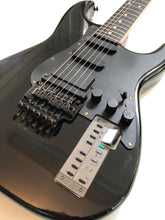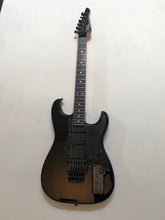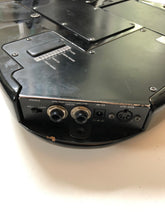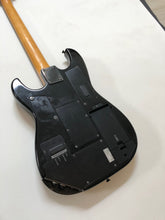Note that this PG-380 has an issue with the Low E midi pickup - It was modified so that the Low E string is piggy backed onto the A string - so they are monophonic between these two strings, and the Low E note and F do not trigger due to the internal filtering (All other notes work great). All other strings are polyphonic, and chording works great.
These guitars were made by Ibanez for Casio using high end components and is a great ‘strat-like’ guitar even without the added synthesizer electronics. PG-380 guitars sold for $1500 when new in 1987. What makes this guitar unique is that you do not need any external electronics or computer to generate the tones. The tones are internally generated and go straight to your amp. Unlike the Roland synth guitars that require a 13 pin connector to connect to external electronics and then out to your amp.
The PG-380 was way ahead of its time when first introduced. Built-in Hex pickup. MIDI capable. Onboard synth tones (64), expandable with RAM / ROM cards. On the front, there is a synth control panel (see photo).
On the panel there are 12 small buttons for controlling patches and octave shifts, a 2-digit LED display, and two LED's for the built-in tuner. Strat-wise there is a five position pickup selector (1 humbucker and 2 single coil pickups) and controls for tone, guitar volume and synth volume. Apart from a normal 5 pin DIN MIDI-OUT connector there is one mono output for guitar only and a stereo out for guitar + synth. The synth can be set to send on six different MIDI channels, one for each string, or everything over one channel (So, you can do the Kramer Ripley thing with it). Tracking is very good, and shockingly good with bending notes. The backside is full of electronics and a slot for the ROM cards. The back also has access to configuration switches and to gain pots for balancing the output of individual strings from the HEX pickup.







